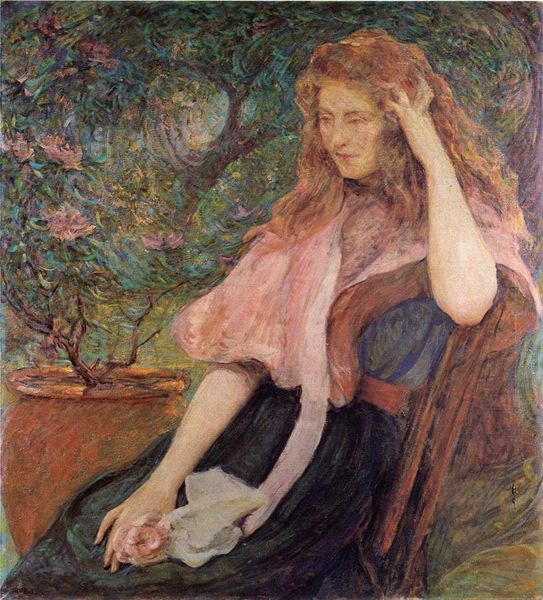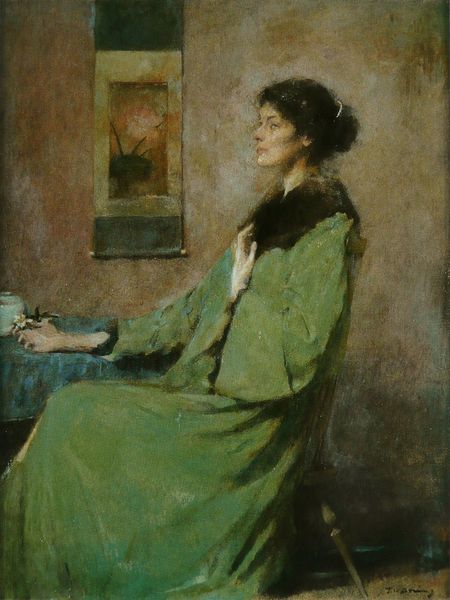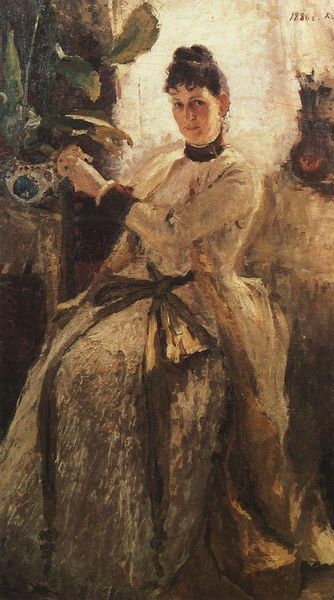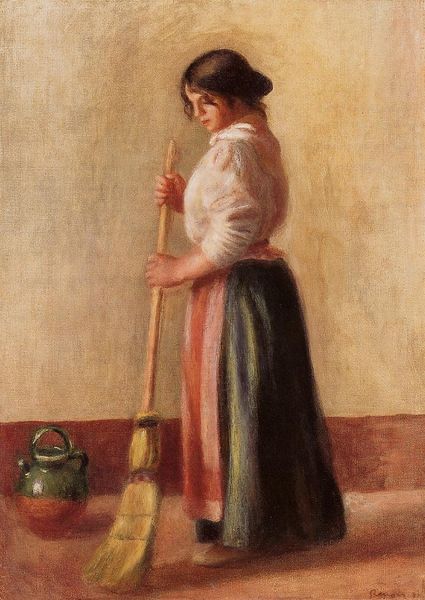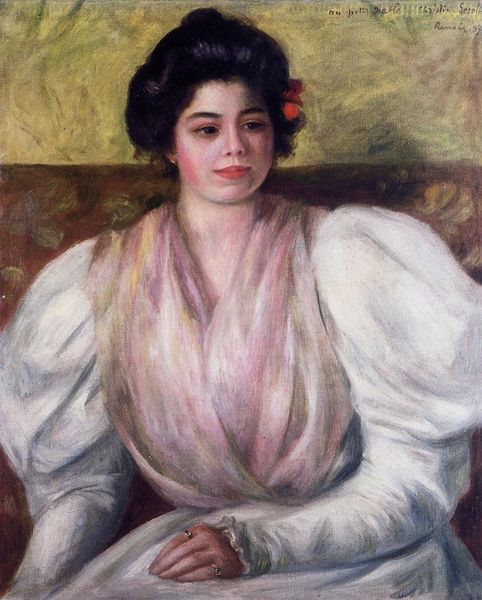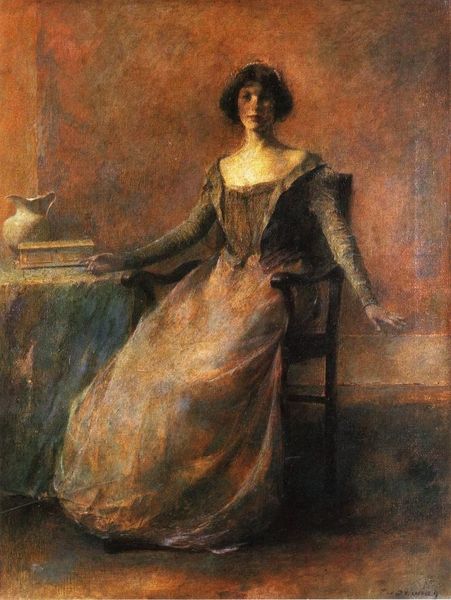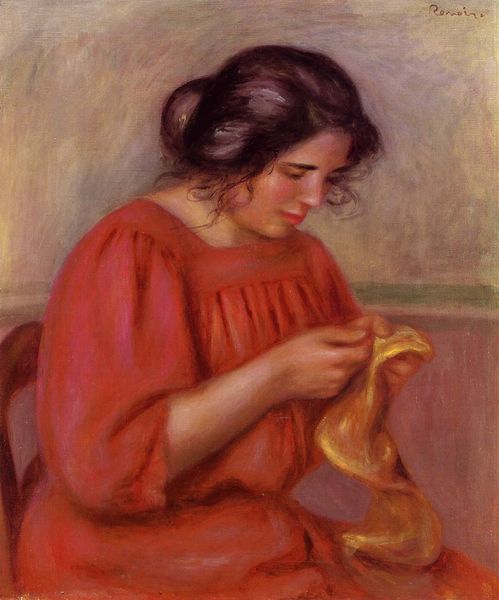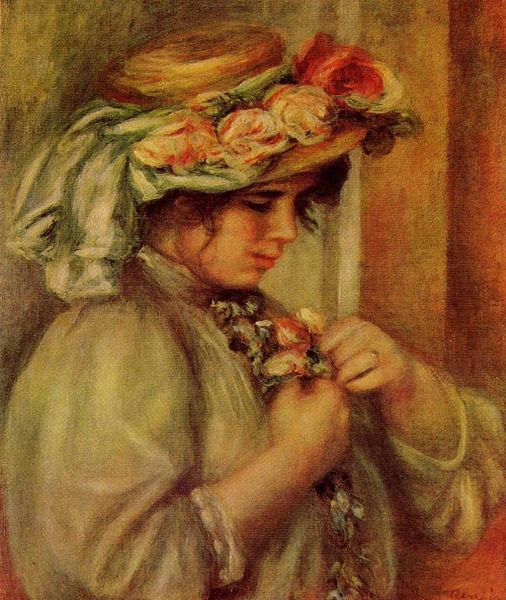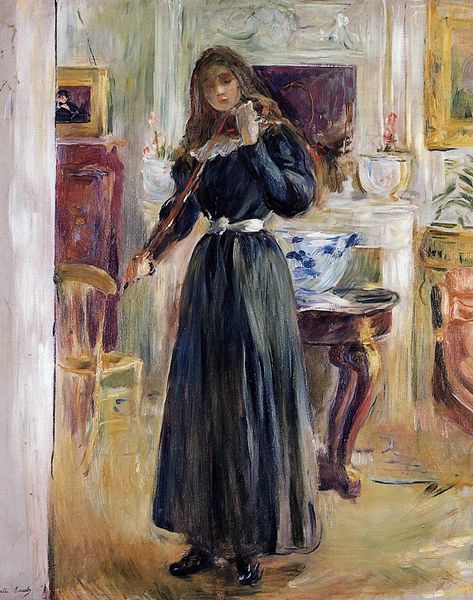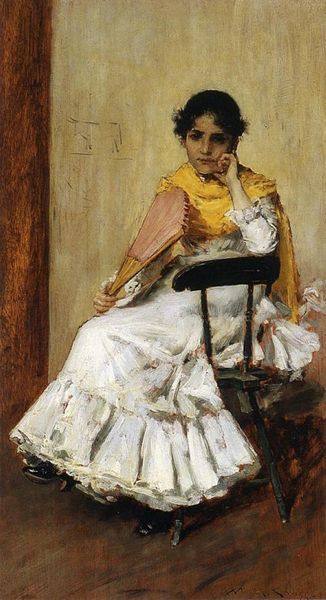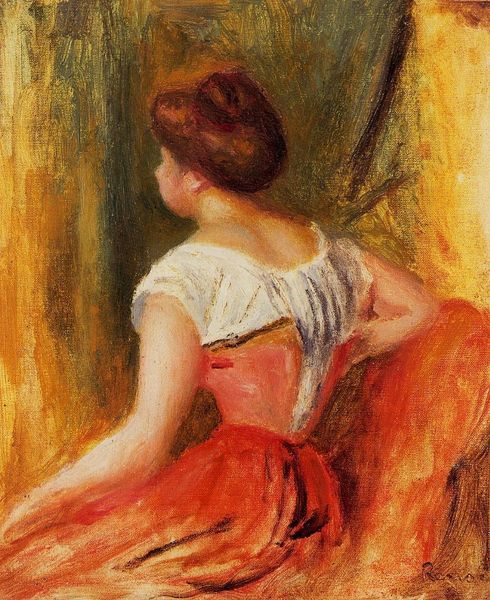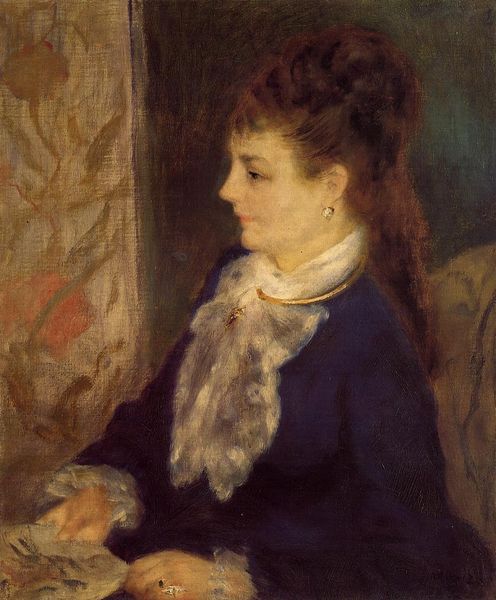
Copyright: Public domain
Curator: Mary Cassatt painted "Woman at Her Toilette" in 1909. It’s an oil on canvas, a genre scene, intimately scaled and full of a soft, muted light. What strikes you first about this piece? Editor: It feels like a stolen moment. She's caught between realities, looking into a mirror as if searching for an answer. There's a palpable stillness, almost a melancholy. I wonder what she sees. Curator: That's interesting. The intimacy is central. Cassatt, famously dedicated to portraying women in their everyday lives, grants us a private view into this woman’s toilette, which, historically, wasn't always such a private affair. These spaces and rituals became symbolic stages. Editor: Stages for presenting oneself to the world? Yes, she holds a small hand mirror. The details of the face looking back at her, caught in the big mirror, are not fully readable. This is more about an introspective reflection. What story is she composing for herself? Is it a performance, a ritual, or something genuinely profound? Curator: Absolutely, there’s that push and pull. Cassatt never married and dedicated her life to her art, yet painted domestic scenes constantly. Consider her Impressionist brushstrokes: broken color, light, soft edges that give the entire image a tender quality, especially in the pink robe. Editor: The loose brushwork almost obscures the background, further emphasizing the subject's inner world. I see some tension in her composition – mirrors multiplying, reflections within reflections. Does she even see herself as she truly is? And if so, how much of that is her or just an artifact of societal pressures and standards? Curator: A vital point. We can also place Cassatt in conversation with contemporaries like Degas. Whereas he might capture dancers backstage or the frenzy of a racecourse, Cassatt turns that sharp eye towards women and their private environments. The politics of the gaze are entirely redirected by her own position. Editor: Thinking about Cassatt's Impressionist context sheds further light on her pursuit of subjectivity in her sitters. There is something here, perhaps, more about feeling than pure representation. Curator: Perhaps the genius is making us stop and ponder how historically, even daily life, like these toilettes, becomes the richest place to negotiate identity, meaning and representation. Editor: Yes, her exploration of interiority within domesticity certainly stays with you.
Comments
No comments
Be the first to comment and join the conversation on the ultimate creative platform.
